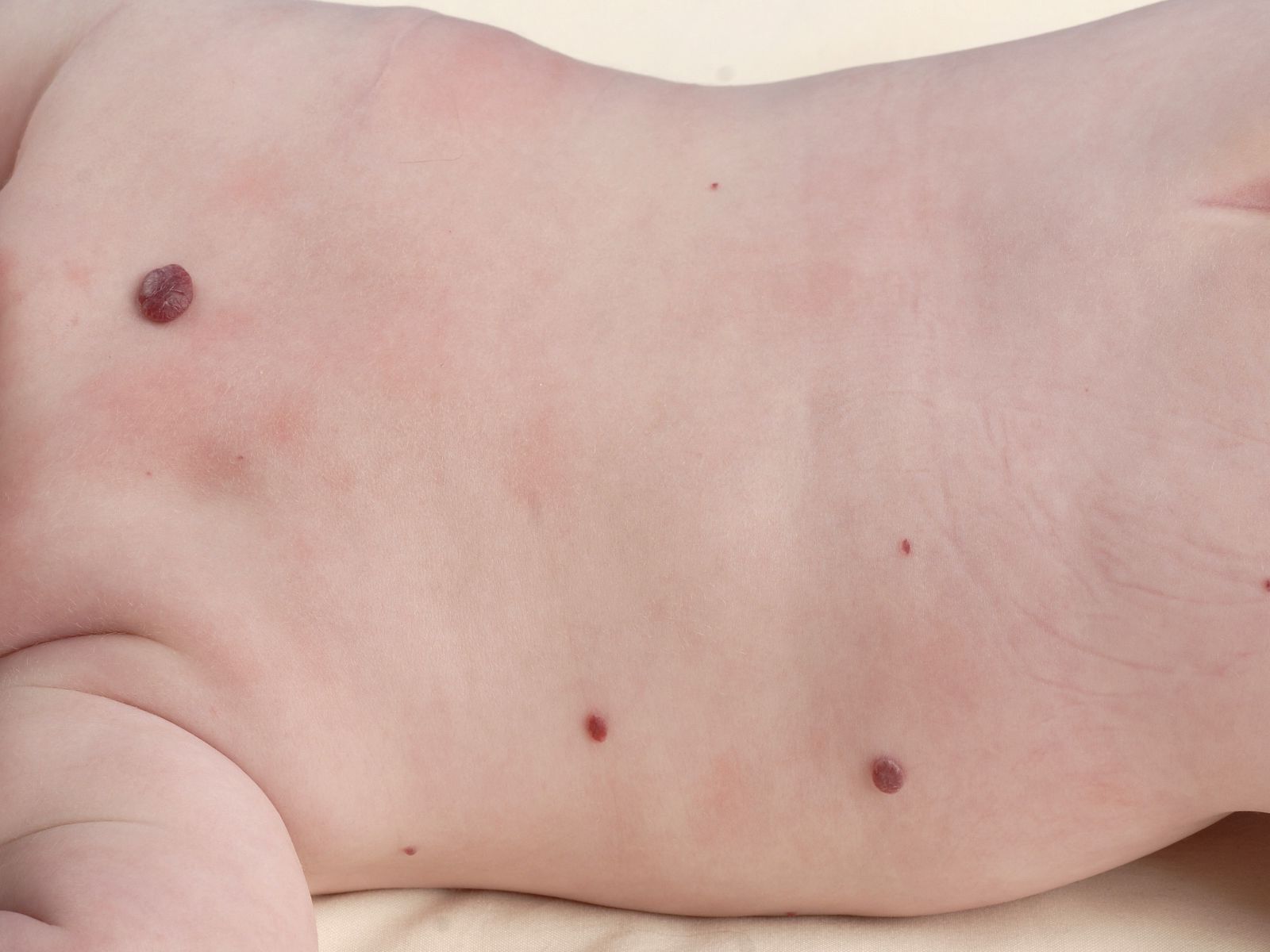
Diffuse Neonatal Hemangiomatosis is a rare condition that affects newborns, characterized by multiple hemangiomas spread throughout the body. These benign tumors, made up of blood vessels, can appear on the skin, liver, lungs, and other organs. Early detection is crucial since the condition can lead to complications like heart failure or breathing difficulties. Parents and caregivers often notice red or purple spots on the baby's skin, which might prompt further medical evaluation. Understanding the symptoms, treatment options, and potential outcomes can help families navigate this challenging diagnosis. Let's dive into 30 essential facts about this rare but significant condition.
Key Takeaways:
- Diffuse Neonatal Hemangiomatosis (DNH) is a rare condition in newborns, characterized by multiple benign tumors in the form of hemangiomas. It can affect the skin and internal organs, posing serious health risks.
- Early diagnosis and treatment are crucial for managing DNH. Symptoms include skin lesions and signs of heart failure. Support groups and pediatric specialists play a vital role in providing care and resources for families affected by DNH.
What is Diffuse Neonatal Hemangiomatosis?
Diffuse Neonatal Hemangiomatosis (DNH) is a rare condition characterized by multiple hemangiomas, which are benign tumors formed by blood vessels. These hemangiomas can appear on the skin and internal organs, posing significant health risks to newborns.
- DNH primarily affects newborns and infants, often diagnosed within the first few weeks of life.
- Hemangiomas in DNH can be found in various organs, including the liver, lungs, and brain.
- The condition is more common in females than males, with a ratio of approximately 3:1.
- DNH is considered life-threatening due to potential complications like heart failure and internal bleeding.
Symptoms and Diagnosis
Recognizing the symptoms and diagnosing DNH early is crucial for effective treatment. Here are some key points about the symptoms and diagnostic process.
- Skin hemangiomas are usually the first visible sign, appearing as red or purple lesions.
- Infants with DNH may exhibit signs of heart failure, such as rapid breathing and poor feeding.
- Ultrasound and MRI are commonly used to detect internal hemangiomas.
- A biopsy may be performed to confirm the diagnosis and rule out other conditions.
Causes and Risk Factors
Understanding the causes and risk factors can help in managing and potentially preventing DNH. Although the exact cause is unknown, several factors are believed to contribute.
- Genetic mutations are thought to play a role in the development of DNH.
- Premature birth is a significant risk factor, with preterm infants more likely to develop the condition.
- Low birth weight is another risk factor associated with DNH.
- Family history of hemangiomas may increase the likelihood of developing DNH.
Treatment Options
Treatment for DNH aims to manage symptoms and prevent complications. Various options are available depending on the severity and location of hemangiomas.
- Corticosteroids are often the first line of treatment to reduce the size of hemangiomas.
- Beta-blockers like propranolol have shown effectiveness in shrinking hemangiomas.
- In severe cases, surgical removal of hemangiomas may be necessary.
- Laser therapy can be used to treat superficial skin hemangiomas.
Complications and Prognosis
DNH can lead to several complications, impacting the overall prognosis. Early intervention is key to improving outcomes.
- Heart failure is a common complication due to the increased blood flow required by multiple hemangiomas.
- Internal bleeding can occur if hemangiomas rupture, particularly in the liver or brain.
- Anemia may develop as a result of blood loss from hemangiomas.
- The prognosis varies; some infants respond well to treatment, while others may face ongoing health challenges.
Research and Future Directions
Ongoing research aims to better understand DNH and develop more effective treatments. Here are some recent advancements and future directions.
- Studies are exploring the genetic basis of DNH to identify potential targets for therapy.
- New imaging techniques are being developed to improve early detection of internal hemangiomas.
- Researchers are investigating the use of newer medications, such as sirolimus, for treating DNH.
- Clinical trials are ongoing to evaluate the long-term safety and efficacy of existing treatments.
Support and Resources
Families dealing with DNH need support and access to resources. Here are some ways to find help and information.
- Support groups and online communities can provide emotional support and practical advice.
- Pediatric specialists, including dermatologists and cardiologists, play a crucial role in managing DNH.
- Nonprofit organizations offer resources and advocacy for families affected by DNH.
- Educational materials and workshops can help parents understand the condition and treatment options.
Living with Diffuse Neonatal Hemangiomatosis
Living with DNH requires ongoing care and monitoring. Here are some tips for managing daily life with the condition.
Final Thoughts on Diffuse Neonatal Hemangiomatosis
Diffuse Neonatal Hemangiomatosis (DNH) is a rare but serious condition. It involves multiple hemangiomas spread across the body, often affecting vital organs. Early diagnosis and treatment are crucial for managing symptoms and improving outcomes. Parents and caregivers should stay informed about the signs, such as rapid growth of red or purple skin lesions. Consulting a specialist can make a significant difference in treatment plans. While DNH can be daunting, advancements in medical research offer hope. New therapies and medications continue to emerge, providing better management options. Support networks and resources are also available for families navigating this condition. Staying proactive and informed can lead to better health and quality of life for affected infants. Remember, knowledge and early intervention are key in dealing with DNH.
Frequently Asked Questions
Was this page helpful?
Our commitment to delivering trustworthy and engaging content is at the heart of what we do. Each fact on our site is contributed by real users like you, bringing a wealth of diverse insights and information. To ensure the highest standards of accuracy and reliability, our dedicated editors meticulously review each submission. This process guarantees that the facts we share are not only fascinating but also credible. Trust in our commitment to quality and authenticity as you explore and learn with us.
